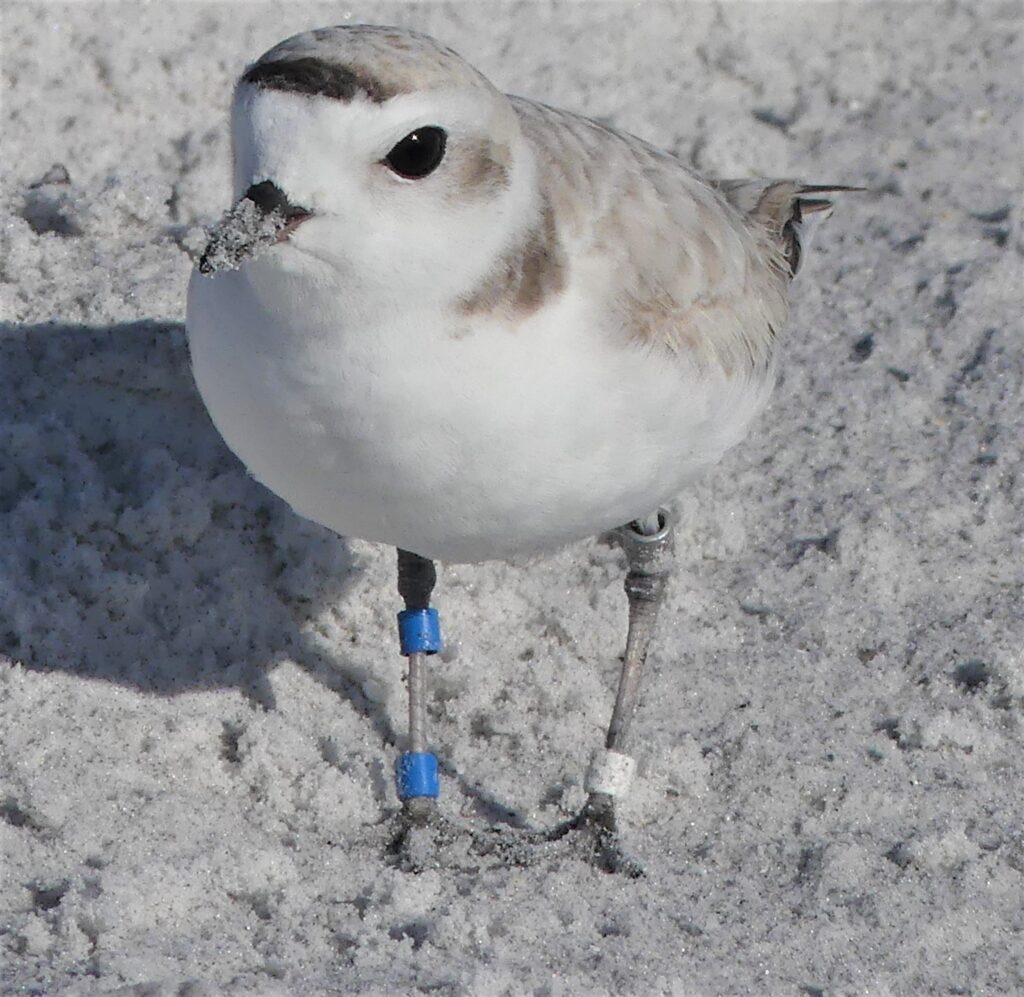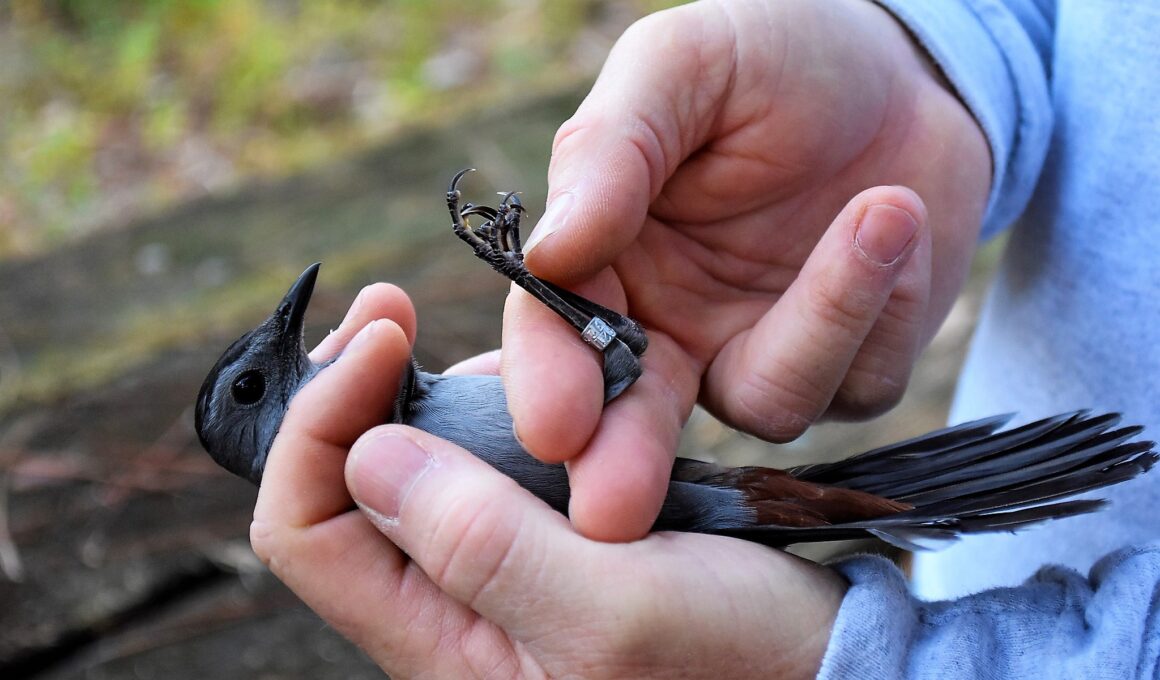
That beautiful bird sporting a colorful anklet isn’t just wearing bright bling. It’s part of a centuries-old effort to track birds that’s become more important than ever as their populations and habitat around the world shrink. It’s particularly important in the Tampa Bay region, which is a hot spot for migrating birds flying through on their way to warm winter locations or back to the northern locales where they nest.
For Jim McGinity, the environmental resource teacher at Learning Gate Community School in Lutz, it’s a twice-a-year outdoor learning experience for students from kindergarten through eighth grade. “Some of these kids have been watching me band birds for many years,” he said. “Most of the birds who come through here don’t stay for long, so the kids get to understand the importance of stop-over locations when the birds are traveling 1,500 miles or more.”
It’s also a personal passion for the Indiana native who began birding as a nine-year-old and founded Florida Avian Conservation in 2011 to study migratory birds passing through west Central Florida. He’s up long before dawn on weekends during spring and fall migration to band birds at heavily wooded sites on Caladesi Island or in Dunedin’s Hammock Park. (He’ll be there on April 15 from 9 a.m. to noon at an event open to the public.)
Early mornings begin with McGinity pounding in small metal poles to support black nets that blend into nearby woods so the birds don’t see them. They fly into the nets, which are checked every 30 minutes to ensure that a bird isn’t harmed, so they can be banded.
He’s banded more than 1,000 birds of 58 species including ovenbirds, common yellowthroasts and gray catbirds. Some mornings, he captures more than 100 birds; other days he captures just a few. After the bird is identified, sexed and weighed, with the detailed information entered into his logbook, McGinity selects a metal band with nine numbers stamped on it to wrap around the bird’s ankle. The right size is important — they must be light enough so that the birds’ flight won’t be disrupted.
Most of the woodland birds that McGinity bands are never seen again. Those that are reported have always been found dead, including two from last summer that flew into glass windows.
Luckily, that’s not usually the case for the shorebirds that winter or nest on our beaches, and the migrants who pass through – including the red knots that stop in Tampa Bay as part of their 9,000-mile migration. It’s easier to see the brightly colored bands on larger birds in more open settings. In fact, they’re seen so often that Audubon Florida has a page devoted specifically to banded birds.

“There are many questions that would be difficult to answer without a unique identifier like a band,” said Jeff Liechty, Audubon Florida’s Tampa Bay area regional coordinator. “It gives us a lot of insight into overall population trends, where they’re moving and which habitat they’re using, as well as when they’re migrating that tells us about how temperatures are changing.”
A new focus for banded birds in Tampa Bay is the pelicans captured on the Sunshine Skyway Fishing Pier after they’re inadvertently hooked by fishermen. “These are birds that have been entangled and rescued, but we band them before we put them back out there,” Liechty said. “We want to know where they’re going, where they’re hanging out, and if they’re entangled again.”
The bands are designed to be “field-readable” so the bird doesn’t need to be captured again, he adds. “It’s still very early to make an overarching statement but there have just been a few re-entangled since we started banding them last fall. They’ve been re-sighted in other locations, and some come back to the pier, but there are a surprising few who’ve been seen here since they were released.”
While much of the data collected on banded birds can be extrapolated to populations as a whole, some are very specific to an individual bird. For instance, if a Laysan albatross hadn’t been banded in 1956, no one would know that she is the world’s oldest known wild bird who returns to the same nest every year to lay a single egg.
And closer to home on Outback Key, just off Fort De Soto Park, Lorraine Margeson uses bands to track multiple generations of endangered species, including snowy plovers. “Well, lookee who showed up on Outback Key today,” she posted on a Facebook page that tracks banded birds. “Banded Snowy Plover (GW-X) the famous Miss Sanibel banded in 2017! She usually nests on Caladesi but the Sanibel banded yearling LL Cool J (SG-BB) was taking a shine to her today!!! That would be quite the love story!”

